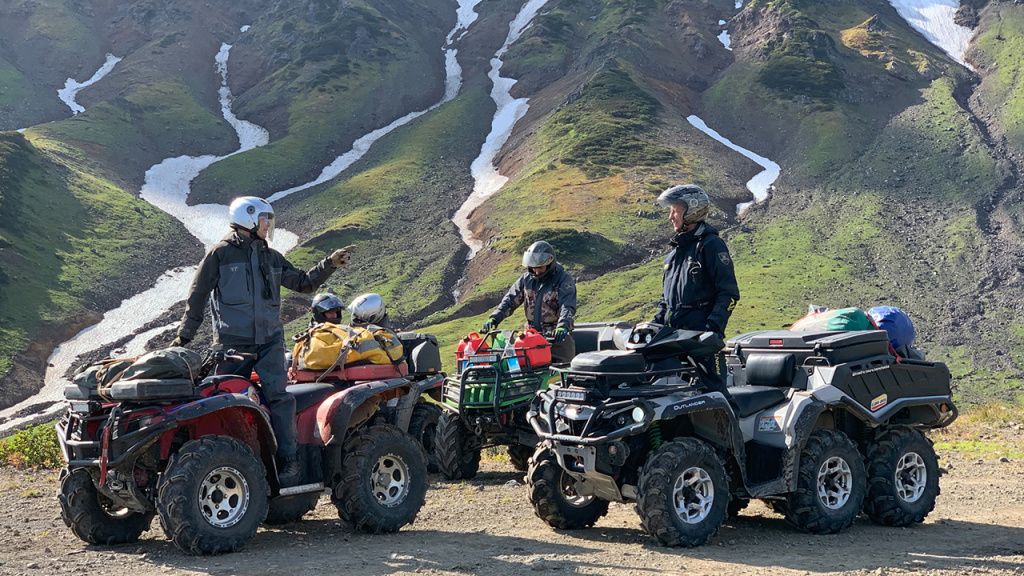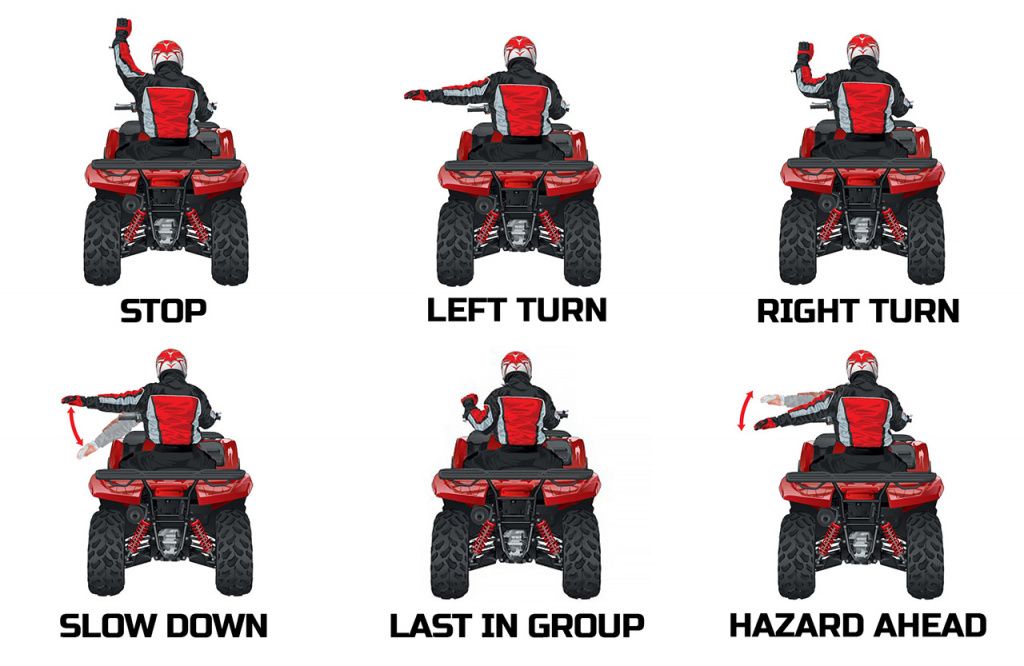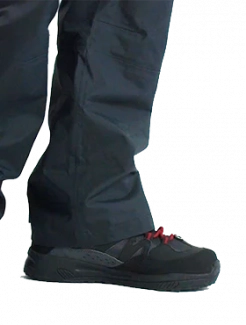ATV Trail Safety: Knowing the Rules
Riding an ATV is a serious sport that you should tackle slowly with both sense and knowledge of etiquette and rules. Make sure you enjoy your ride and stay safe by following these ATV safety rules.
Riding in a group

You should never ride alone, but to hit the trail in a group, you want to follow certain agreed on rules.
Leave space
Leave enough space between you and the vehicle in front of you that if they suddenly apply the brakes, you can stop or maneuver in time to avoid a collision. You can judge this without complicated speed calculations by noticing when the rider ahead of you passes a certain object, a rock, a tree, a sign, anything, and counting three full seconds until you pass it. If you pass that same object in less than three seconds, you need to slow down.
Leave even more space when you're on dusty trails or in the rain to account to reduced visibility.
Be mindful of those ahead and behind
Watch the rider in front of you for sudden stops, hand signals, and problems with their ATV.
When you are overcoming obstacles, be mindful of the rider behind you. Are they aware of the obstacle? Do they see you?
Movement and communication
Indicate with hand signals where you are stopping or slowing down or you see an obstacle.
To communicate with a rider in front of you, flash your lights.
Avoid changing rider order unless you are stopped so the leader of the group can be informed of the new rider order.
Leading a group

Every group needs to have a leader to organize the group and ensure ATV safety rules are followed to keep everyone safe.
Pre-ride
The leader needs to hold a pre-ride meeting to discuss the rules of the ride and ensure everyone's ATV has been thoroughly checked for safety. The leader of the group needs to know if any member of the group has any medical conditions relevant to their safety during an emergency. It's also good policy to discover how many riders have safety certifications and inform each member of the group where emergency information can be found.
Leading the ride
The leader needs to keep all riders in their sight at all times, including the last rider. If the leader loses sight of anyone, they are to halt the group until everyone is visible again.
Orange or other highly visible clothing and flags will make it easier for everyone to be seen.
Have less experienced riders in the front so they can be watched more carefully and be helped, if needed.
If you encounter an obstacle, slow down or stop the group until everyone has overcome the obstacle and has validated their readiness to continue with a thumbs up or thumbs down hand signal.
Do the same with stop signs, except you have to stop instead of just slow down.
Plan regular stops and make those stops more frequent if you will be encountering a lot of obstacles.
When crossing a road
If it is legal for you to cross a public road on your ATV and you're riding with a group, the leader will stop and dismount so they can direct the group across the road. When the last rider has crossed the road, they need to stop and dismount so they can direct the group leader across.
Hand signals

Each rider must know the proper hand signals to communicate with other riders and prevent accidents, and group leaders must ensure that all of their riders know them. These hand signals indicate when a rider is turning, slowing down, stopping, when there is an obstacle, and when they are the last in a group.
Stop
Raise your left arm straight with your fingers stretched.
Left turn
Hold your left arm out perpendicular to your body.
Right turn
Raise your left arm and turn it to the right.
Slowing down
Hold your left arm out and pointing a little downward.
Last in group
Indicate you are the last of a riding group by holding up your left arm with your fist clenched.
Where to stop safely

Don't stop in a curve or in the middle of the trail. Pull off the road in a place with plenty of visibility so you can be seen and have left plenty of room for others to pass.
Many trails offer designated stopping areas to make this convenient.
Blind turns and hills

Take blind turns and hills carefully. Slow your speed and be alert. In difficult terrain, you can scout the area on foot before driving over it. You might use a scout with a tow rope on steep terrain. Always lean forward or stand when driving uphill.
Safety gear

Always wear safety gear. This includes an ATV helmet. One approved by DOT or Snell is best. Also wear eye protection, footwear with shin or ankle protection, a long-sleeved shirt or riding jacket, long pants, and gloves with padding,
Body armor, dust masks, and neck supports might be needed depending on the trail. Waders and riding suits provide extra protection and comfort.
The don't-ever's of ATV safety rules

Don't ride under the influence of alcohol or drugs.
Don't ride beyond your capabilities. Do only what you are comfortable and confident about as you build your skill set.
Don't ride on an ATV that isn't appropriate for your age, weight, and skills.
Ride only on ATV trails and at speeds safe for that trail.
Don't carry more than the number of riders the ATV is designed for. ATVs are carefully planned for specific weights. If you add more people onto it, you increase the chances of an accident.
Never let kids less than 16 years old ride unsupervised.
Only ride on public roads where it is legal for you to do so. Just cross the road, unless your ATV has been made safe for driving on public roads, and follow ATV safety rules.






